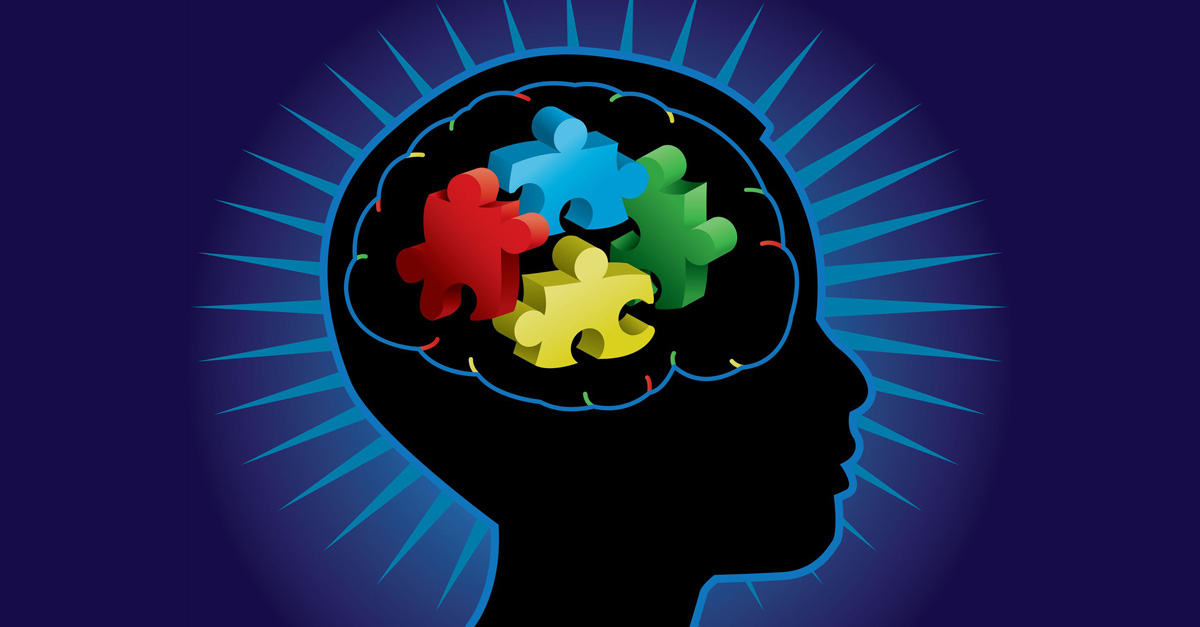Scientists have just shattered one of the most significant assumptions in autism research, and the implications could transform how millions of families understand their children’s diagnoses. For decades, experts treated autism as one condition with varying degrees of severity, lumping together people with vastly different traits, genetic backgrounds, and support needs under a single umbrella.
Now, researchers at Princeton University have discovered something that changes everything: autism isn’t one condition at all. It’s four distinct disorders, each with its own unique genetic signature and developmental pattern. Using data from over 5,000 children, they’ve uncovered what amounts to a complete rethinking of how autism works at the biological level.
The discovery promises to revolutionize everything from early diagnosis to personalized treatments, potentially ending decades of confusion for families wondering why their child with autism seems so different from others on the spectrum.
Breaking Down the Big Umbrella: Why One Size Never Fits All
The traditional autism spectrum approach always felt incomplete to families and researchers alike. Some children are nonverbal and require lifelong support, while others excel academically but struggle socially. Some develop typically until the age of two, then regress, while others exhibit differences from birth. Some have intellectual disabilities, others possess exceptional abilities.
Despite this enormous diversity, most research treated autism as a single entity with varying presentations. Parents often felt confused when their child’s experience didn’t match what they read about autism or what they saw in other families. Doctors struggled to predict developmental paths or recommend treatments based on such a broad diagnostic category.
The breakthrough came through the SPARK study, a massive research project funded by the Simons Foundation that has been following thousands of families affected by autism. Researchers analyzed data from 5,392 children, examining over 230 behavioral traits, including communication abilities, repetitive behaviors, social skills, and developmental milestones.
Using sophisticated statistical analysis, they discovered that these children naturally grouped into four distinct categories, each with its unique pattern of strengths, challenges, and genetic characteristics. Rather than seeing autism as one condition with a wide range of presentations, the data revealed four separate conditions that had been mistakenly grouped.
Meet the Four Types: Your Guide to Autism’s True Faces
Social and Behavioral Challenges: represents the largest group, affecting nearly 2,000 children in the study. These individuals primarily struggle with social skills, such as maintaining eye contact, reading facial expressions, and interpreting tone of voice. They often engage in repetitive behaviors but typically have average cognitive development. Their main difficulties center on understanding social rules and managing behavioral responses to stress or change.
Mixed ASD with Developmental Delay: affects about 1,000 children and represents a more complex presentation. These children show classic autism traits alongside broader developmental delays that might include late walking, delayed speech, or difficulty with basic self-care tasks like dressing or feeding themselves. This subtype often overlaps with other neurodevelopmental conditions, making diagnosis more challenging.
Moderate Challenges: includes about 1,860 children who fall somewhere in the middle. These individuals show noticeable autism traits that require support, but not as intensely or broadly as other subtypes. They may function well in some areas while struggling significantly in others, particularly with emotional regulation or adapting to unexpected changes.
Broadly Affected: represents the smallest but most severely impacted group of about 550 children. These individuals face significant difficulties across multiple areas, including social interaction, communication, learning, and behavior. They typically require extensive support and often have limited verbal communication abilities.
The Genetic Detective Story That Changed Everything

After identifying these four distinct groups behaviorally, researchers turned to genetics and made an even more remarkable discovery. Each subtype exhibited distinct patterns of genetic mutations, indicating that they arise through different biological pathways.
Children in the Broadly Affected group were most likely to carry de novo mutations—genetic changes that appear for the first time in that child, not inherited from either parent. These spontaneous mutations often occur randomly during early development and tend to have more dramatic effects on brain function.
In contrast, the Mixed ASD with Developmental Delay group more commonly carried rare inherited genetic variants passed down through families. This suggests that for these families, autism risk accumulates across generations through combinations of inherited genetic changes.
The Social and Behavioral Challenges group showed different genetic patterns entirely, with more common genetic variants associated with conditions like ADHD and depression. Meanwhile, the Moderate Challenges group carried mutations in genes that are less evolutionarily constrained, meaning changes to these genes may have less severe effects.
As researcher Natalie Sauerwald explained:“This helps explain why past genetic studies often fell short—it was like trying to solve a jigsaw puzzle without realizing we were actually looking at multiple different puzzles mixed together. We couldn’t see the full picture, the genetic patterns, until we first separated individuals into subtypes.”
Why Your DNA Tells Different Autism Stories
Understanding these genetic differences helps explain why autism runs so differently in different families. Some families have multiple children with autism and wonder about genetic counseling for future pregnancies. Others have just one child with autism and no family history, leaving parents puzzled about the causes.
The inherited patterns in the Mixed ASD with Developmental Delay group suggest these families may benefit from genetic counseling and have higher chances of autism in subsequent children. Meanwhile, families in the de novo mutation groups (particularly Broadly Affected) may have lower recurrence risks since their children’s autism resulted from spontaneous genetic changes.
These genetic signatures also explain why the same environmental factors might affect families differently. A family with inherited autism susceptibility genes might be more vulnerable to environmental triggers, while families with de novo mutations might develop autism regardless of environmental exposures.
The discovery helps resolve the longstanding debate about autism’s causes by showing that different types of autism likely have other causes, making blanket statements about autism origins misleading.
The 20% Problem: When Genetic Tests Come Up Empty

Despite knowing autism has genetic components, standard genetic testing only explains about 20% of autism cases, leaving most families without clear answers about their child’s condition. This low success rate has puzzled researchers and disappointed families seeking genetic explanations for their condition.
The new research suggests this poor track record occurred because scientists were essentially looking for genetic needles in the wrong haystacks. By treating all autism cases as variations of the same condition, genetic studies mix signals from four different disorders, diluting the ability to identify specific genetic patterns.
Separating autism into four distinct subtypes significantly improves the likelihood of identifying relevant genes. When researchers analyze each subtype separately, genetic signals become much more transparent and more interpretable. This approach could potentially increase the diagnostic yield of genetic testing from 20% to much higher percentages.
For families, better genetic testing means more precise answers about their child’s condition, more accurate information about recurrence risks, and eventually, more targeted treatment approaches based on specific genetic mechanisms.
From Lab Discovery to Your Doctor’s Office
“This discovery, published in Nature Genetics, could change the way we understand, diagnose, and support people on the autism spectrum,” potentially transforming clinical practice in several ways.
An earlier and more accurate diagnosis becomes possible when doctors understand these distinct subtypes. A child with speech delays and inherited genetic variants might follow a different developmental trajectory than a child with de novo mutations and broader challenges. Understanding these patterns helps doctors provide more accurate prognoses and intervention recommendations.
Personalized treatment approaches could emerge based on genetic profiles and behavioral subtypes. Instead of one-size-fits-all therapies, clinicians may eventually prescribe specific interventions tailored to each type of autism. Children with Social and behavioral challenges may benefit from different approaches than those who are Broadly Affected.
Better family counseling becomes possible when doctors can explain why one child’s autism journey differs so dramatically from others. Parents often worry they’re doing something wrong when their child doesn’t respond to interventions that helped other families. Understanding subtypes helps normalize this diversity and reduces parental guilt.
The Brain Development Timeline That Explains Everything

Perhaps most remarkably, the genetic differences between autism subtypes correspond to different stages of brain development. Researchers found that genes affected in each subtype are active at various times during fetal and early childhood development.
The Mixed ASD with Developmental Delay group exhibited mutations in genes primarily active during fetal development, which explains why these children often show delays in early milestones, such as walking and talking. Their autism stems from disruptions that occur before birth, during critical periods of brain formation.
In contrast, the Social and Behavioral Challenges group carried mutations in genes that become more active after birth, during periods when social learning and behavioral regulation are developing. This timing explains why these children may reach early milestones normally but struggle with social skills and behavior as they grow.
The Broadly Affected group exhibited disruptions across multiple developmental stages, accounting for their wide-ranging difficulties. Meanwhile, the Moderate Challenges group had mutations in less critical genes, resulting in milder impacts on development.
What This Means for Families Right Now

For families currently navigating autism, this research provides a new framework for understanding their child’s unique presentation. Parents who felt confused about why their child seemed so different from other children with autism now have scientific validation that autism truly comes in distinct forms.
The research doesn’t immediately change available treatments, but it offers hope for more targeted approaches in the future. Families can feel more confident that research is moving toward personalized medicine approaches that account for their child’s specific type of autism.
For families with multiple children or those planning future pregnancies, genetic counseling may become more informative as understanding of these subtypes improves. Families with inherited patterns might benefit from more detailed genetic evaluation and family planning discussions.
Most importantly, this research validates what many families have long suspected: their child’s autism is unique and deserves individualized understanding and support. The days of feeling like square pegs being forced into round holes may be numbered.
Hope on the Horizon
This breakthrough represents a fundamental shift from viewing autism as one mysterious spectrum disorder to understanding it as four distinct conditions with different causes, developmental patterns, and optimal treatments. Rather than forcing all autistic individuals into the same diagnostic box, science is finally catching up to what families have long known: autism affects everyone differently because it’s several different conditions.
The research opens doors to precision medicine approaches that could transform outcomes for individuals with autism spectrum disorder. Instead of trial-and-error treatment approaches, doctors may eventually prescribe interventions based on specific genetic and behavioral profiles.












Leave a Reply